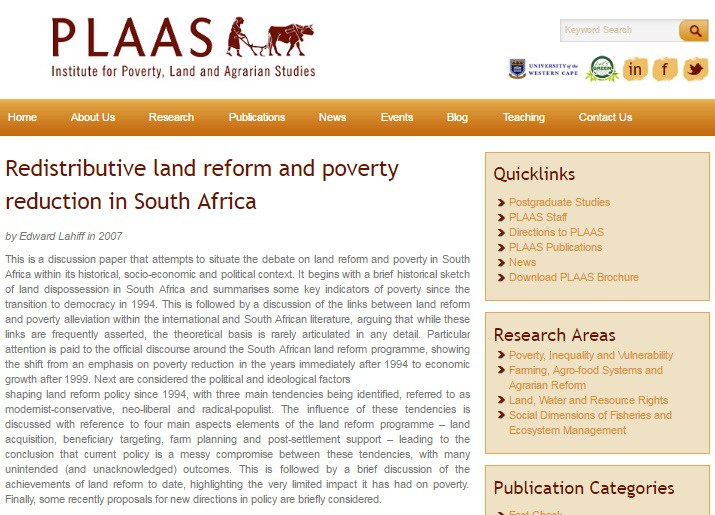Resource information
At the end of Apartheid, approximately 82 million hectares of commercial farmland (86% of total agricultural land, or 68% of the total surface area) was in the hands of the white minority (10.9% of the population), and concentrated in the hands of approximately 60,000 owners (Levin and Weiner 1991: 92). Over thirteen million black people, the majority of them poverty-stricken, remained crowded into the former homelands, where rights to land were generally unclear or contested and the system of land administration was in disarray (Hendricks 1990; Cousins 1996; Lahiff 2000). These areas were characterised by extremely low per capita incomes and high rates of infant mortality, malnutrition and illiteracy relative to the rest of the country. On privately-owned (white) farms, millions of workers and their families faced tenure insecurity and lack of basic facilities. Today, South Africa has one of the most unequal distributions of income in the world, and income and quality of life are strongly correlated with race, location and gender (May 2000: 2)



